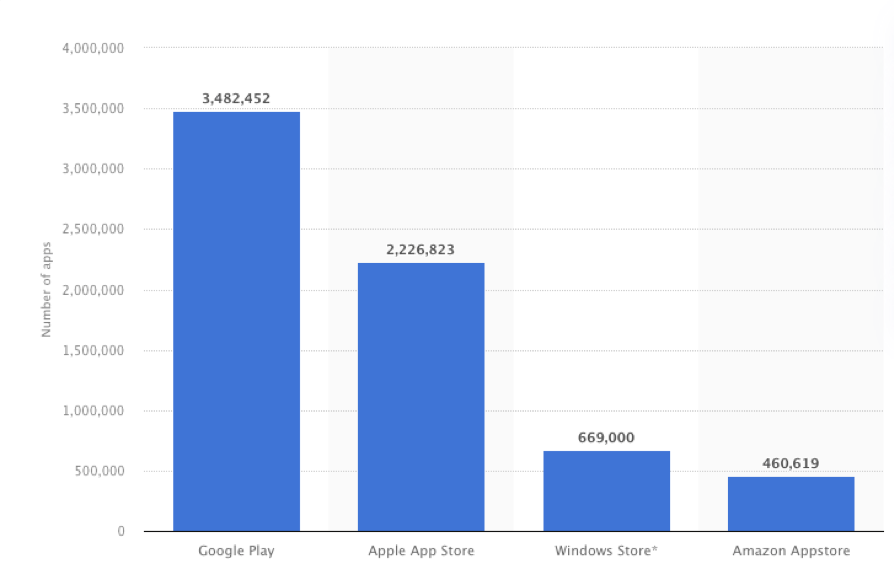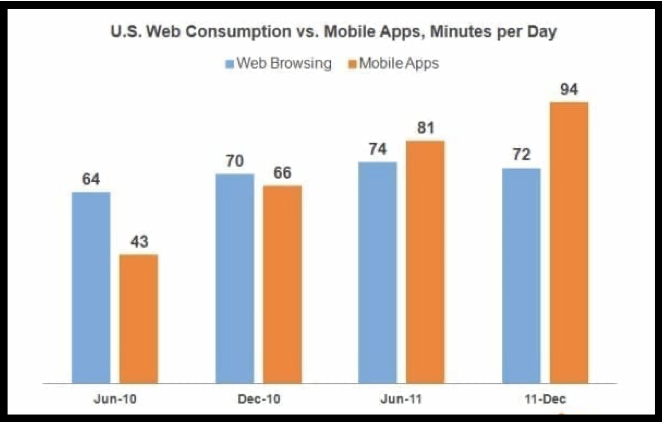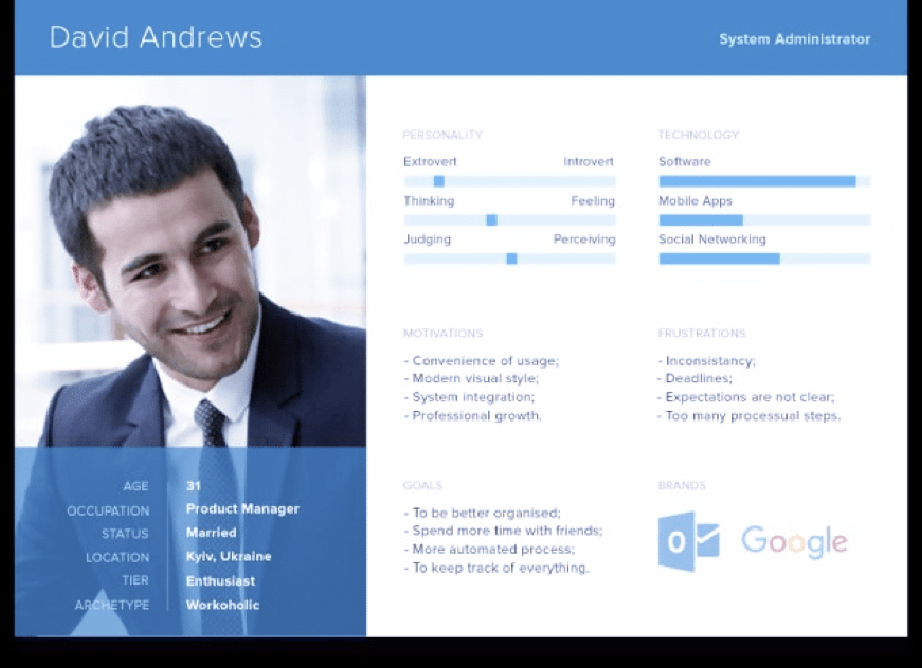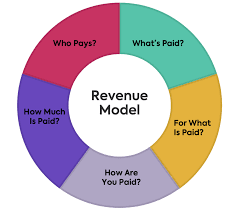8 Top Tips & Tricks to Designing a Mobile App Marketing


Fun Fact: There are over 3.48 million applications on the Google Play Store alone, and over 3500 apps also get added to it every day.
With over 5.5 million mobile apps already jostling to grab the user’s attention on Google Play Store and Apple app store, you cannot expect your app, especially if new, to just work like magic and achieve the downloads it deserves.
No matter how you design a mobile marketing app or how critical it is for the users, it always needs to be accompanied by a great and well-thought-through mobile app marketing strategy. You need to commit time and effort to design mobile app marketing if you would like your app to be successful in this extremely competitive space.

What Is Mobile App Marketing?
Simply put, mobile app marketing, also sometimes referred to as mobile engagement loop, involves marketing or promoting your mobile application to users at every stage of the user’s life cycle.
In today’s digital age, with over 6,500 million smartphone users worldwide and growing, mobile apps are one of the primary mediums to stay in touch with your audience. In fact, a look at the web consumption data for the US alone, and we are already witnessing that mobile app minutes have surpassed that of web consumption.
Your design of mobile app marketing, which is a continuous process, plays a critical role beyond just getting your traffic.
Mobile app marketing helps the users get to know about your app, but it also covers every marketing element required to ensure its success. Your mobile marketing design plays a critical role in this entire customer journey, from the user’s first interaction with your application to ultimately becoming a regular to your application.
Marketing the app through various campaigns is crucial. This is to make it discoverable to the users, enticing them to download the app on their devices, regularly interacting and engaging with them so that they become regular visitors, all form an integral part of mobile app marketing.
While you design a mobile marketing app, emphasize targeting the five main stages of the user’s life cycle:
Discovery
The user may not even be aware of your app at this stage. Emphasize introducing your application to them.
Consideration
This stage is all about constant and consistent engagement. Lay emphasis on providing information and highlighting the benefits of your app.
Conversion
This critical stage is where you entice the user to download your app. Your marketing communication and onboarding process need to be attractive and simple here.
Developing relationship
This is where you build trust in your user’s mind. Listening to the user and responding accordingly are key to winning this trust.
Retention
All of the above is of no use if your app is not strong enough to entice users to return to it again. Adding fresh content, ensuring a flawless experience, and listening to users’ feedback all play a critical role in ensuring your app’s success.
With visuals helping humans to perceive over 80% of the information, mobile marketing design also incorporates visual content into these marketing communications through texture, color, design, shape, etc.
This helps trigger the audience’s emotional side, thus helping build loyalty amongst the users. Ensure that you design a mobile marketing app in a way that communicates the brand language while matching the consumer’s taste.
8 Tips & Tricks to Help Design Mobile App Marketing
When you design a mobile app marketing strategy for your app, you need to be thorough with your planning and be precise with your execution.
Mobile app marketing is a continuous and never-ending process and is paramount for your app to attain success and continue to enjoy the attention it deserves. Work on app marketing design should begin well before the launch of your application itself.
Some schools would even recommend starting work at least 60-90 days before the actual launch itself.
The entire mobile app marketing can ideally be broadly classified into two broad stages: the pre-launch stage and the post-launch stage.
Here are eight tips and tricks under these stages that can help you while you design a mobile app marketing loop for your app.
The Pre-Launch Stage
1. Know your market, your customer
Before you start designing your app, you need to conduct a detailed market study to know about your customer and the market. You must clearly understand and define the pain points your app will solve for your users.
During your market research, make it a point to study your competition (at least the top five) and their strategies to connect with the audience. Make a detailed comparison of all features, their ranking, pricing, UI/UX, etc. This will help you get a realistic picture of where you stand.

2. Define user personas for mobile app marketing

Once you have studied the market and understood your audience’s pain points that you are going to address through your app, segregate the users into various personas for achieving better conversion through your mobile app marketing.
User personas can be divided according to their demographics, such as gender, location, age, interests, etc., or could be based on specific problems they face that your app would be able to address.
Segregating users into specific personas based on these traits or requirements helps you penetrate the market better with more targeted communication that resonates with your audience.
3. Define your revenue model

A revenue model defines a business and fuels the success or failure of a business. It takes money to build the app, market the app, and run any business itself. So, you must define your revenue model well in advance, and it should be in place by the time you set to design a mobile marketing app.
There are many options, from a subscription model to a one-time fee model. Even if you do not intend to charge anything from the customer when you launch the app, it is essential to define the revenue model in advance and keep it ready so that it can be a part of your app marketing design and strategy.
4. Design an awesome website, landing page, or both for your app
Designing a detailed, informative website or a landing page for your mobile application is the first step you should take when considering developing a mobile app marketing strategy.
Depending upon the app, its usage, your marketing budget, and the amount of engagement you need, you can decide whether to build a website, a landing page, or in some cases, both.
Not only is it crucial for SEO purposes, but a well-crafted website can also become the primary source for your users to know about your app organically before they even download the app.
While designing your pages, be creative and use audiovisuals to make the page both attractive and engaging. Remember to add the right keywords and optimize your pages for search engines. Adding a 30-60 minutes demo video helps immensely in introducing your app to the users.
5. Adopt a content marketing strategy and capitalize on social media platforms
Blogs, video posts about your app, articles about your app features, etc. are all great mediums to introduce your app. This is for the audience before the app is launched to help you establish yourself and your brand as a subject-matter expert.
Posting regular blogs and posts on your website and social media can help build awareness, drive traffic and lead to conversions when the app is launched in the market. They also help build interest in the minds of the users. These contents are great assets for re-engaging with the users.

Another good idea when you design a mobile app marketing strategy is to include provision for paid marketing on various social platforms. Make your posts and the promotion for your app easy for people to share within their network as well. Make your audience your medium to communicate with more users as well.
The Post-Launch Stage
6. Optimize for the app stores and look at alternative stores too
Like on the web, optimizing for app stores is the foundation step when you design a mobile app marketing plan for your app.
The brief description you add for your app, selecting the right category, plays a crucial role in app store optimization (ASO). Ensure you add appropriate keywords in the right places. Localize your app listing on the various stores. It helps to maximize the permissible keyword character limit and include videos and images about your app.
Also, the Apple App Store and Google Play Store are not the only two app stores available at your disposal. There are various other platforms like Amazon app store, Windows store, GetJar, Opera Mobile Store, etc., where you can feature your app as well. This can help you with your reach as well.
7. Maintain two-way communication with the users. Encourage referrals

Studies show that you can boost your retention rate by over 70% over two months by sending out a single push notification to a new user within the first week of installing the app.
A great way to communicate with your users is by using push notifications to communicate offers, special promotions, rewards, and many other things, thus helping with engagement.
Equally important is to ensure that you provide an option for the user to communicate with you and share their experience and expectations from the app.
The more aligned you make your app with the users’ experience, the more seamless the user experience becomes, the higher the chances of you being able to retain the user. Incentivizing your users for referrals is a great strategy to acquire new customers at lesser acquisition costs.
8. Set goals and keep working towards them
Setting goals, identifying and measuring key metrics for these goals form the foundation for any business and should be clear when you design mobile app marketing for your app.
Certain key metrics like daily active users (DAUs), churn rate, time in-app, session interval, cost per acquisition, engagement time, etc., are all common matrices most companies track for their app. These parameters can help ensure you are spending and heading in the right direction with your mobile app marketing.
Key Takeaways
- Today, mobile apps are the primary medium to stay in touch with your users.
- When designing mobile app marketing, remember that it is a continuous process.
- Before even designing the app, it is critical to know what the market and users want.
- It is important to define a revenue model for your app.
- Website and landing pages are primary sources for users to know about your app.
- Maintain two-way communication with users.
- Monitor metrics regularly to ensure your mobile app marketing is going as per plans.
Conclusion
When you design a mobile marketing app, you must be meticulous with your planning and execution. Mobile app marketing and your app need to keep evolving as your customer base evolves.
It is not a one-time investment or execution plan but a continuous process that you need to keep performing in a loop. With dedication, patience, and relentless execution, there is no stopping from reaching the pinnacle of the various app stores.
FAQs
The key differentiator is the user experience. Other factors include loading time, ease of use, and overall customer satisfaction.
A digital marketing strategy, mobile marketing helps you connect directly with your audience on smart devices like mobile phones or tablets. This can be done via websites, email, SMS, MMS, social media, and apps.
To get your app discovered, focus on app store optimization, promote the app, create marketing campaigns, and develop a PR strategy.
The best way to make an app go viral is by engaging with your audience. As the audience grows, so does the value of your app.
The apps in high demand are social media, food delivery, transportation, healthcare, and gaming.
This refers to ads and campaigns exclusively designed for mobile devices. Mobile ads appear within apps, on websites viewed from mobile, or on social media platforms that are viewed through mobile.
Latest Blogs
Explore how Google’s 2025 AI search updates triggered ranking chaos. Learn actionable strategies to adapt your SEO for AI Overviews, zero-click searches, and SERP volatility. Stay ahead now.
Learn how to rank on AI search engines like ChatGPT, Perplexity, and Gemini by optimizing your content for authority, structure, and relevance. Stay ahead in AI-driven search with this strategic guide.
Explore the best healthcare SEO services for your medical practice. Improve online visibility and effectively reach more patients in need of your services.
Get your hands on the latest news!
Similar Posts

Design
7 mins read
15 Best Firms Offering Design Services in India

Design
5 mins read
All You Need to Know About Data-Driven Design

Design
6 mins read